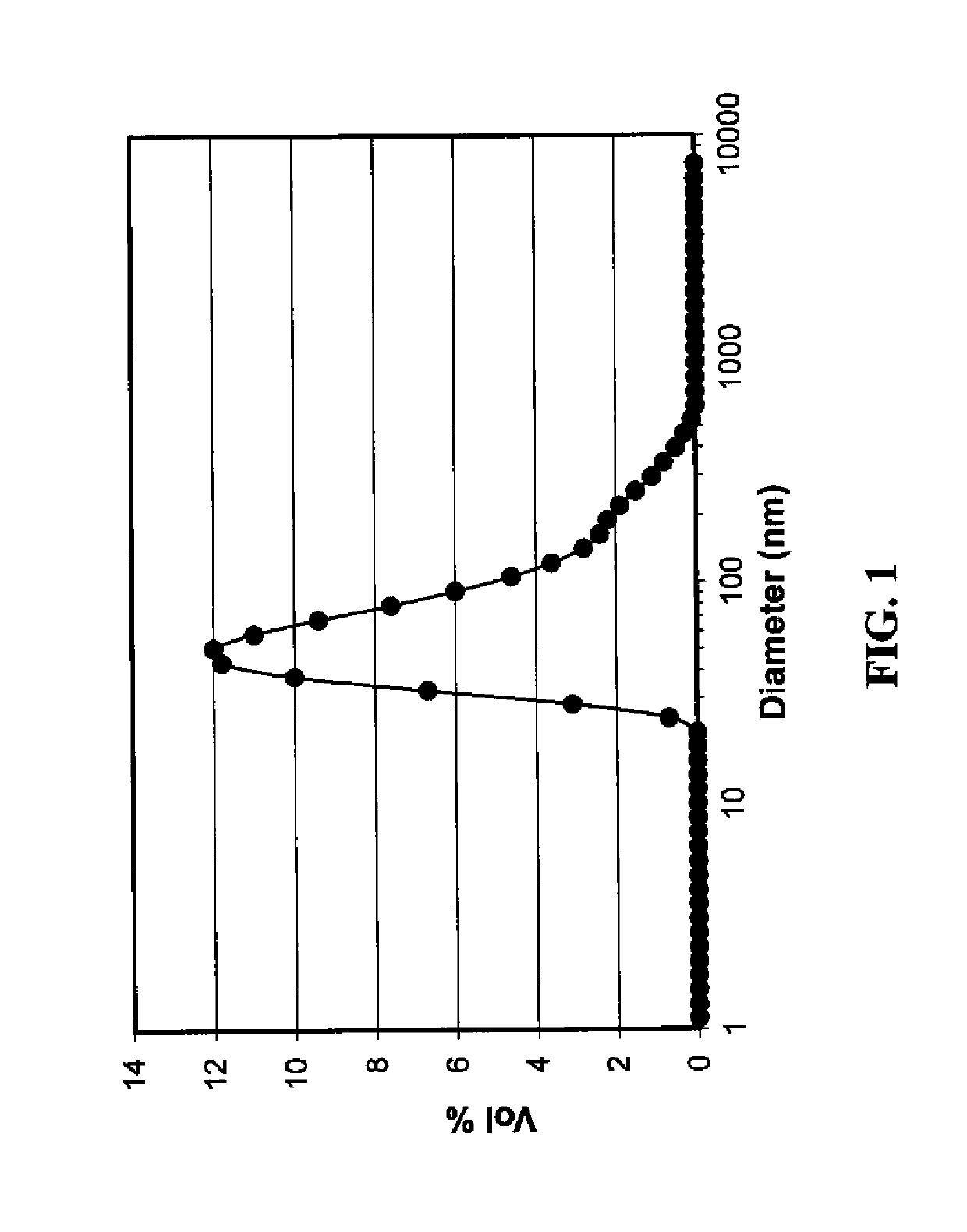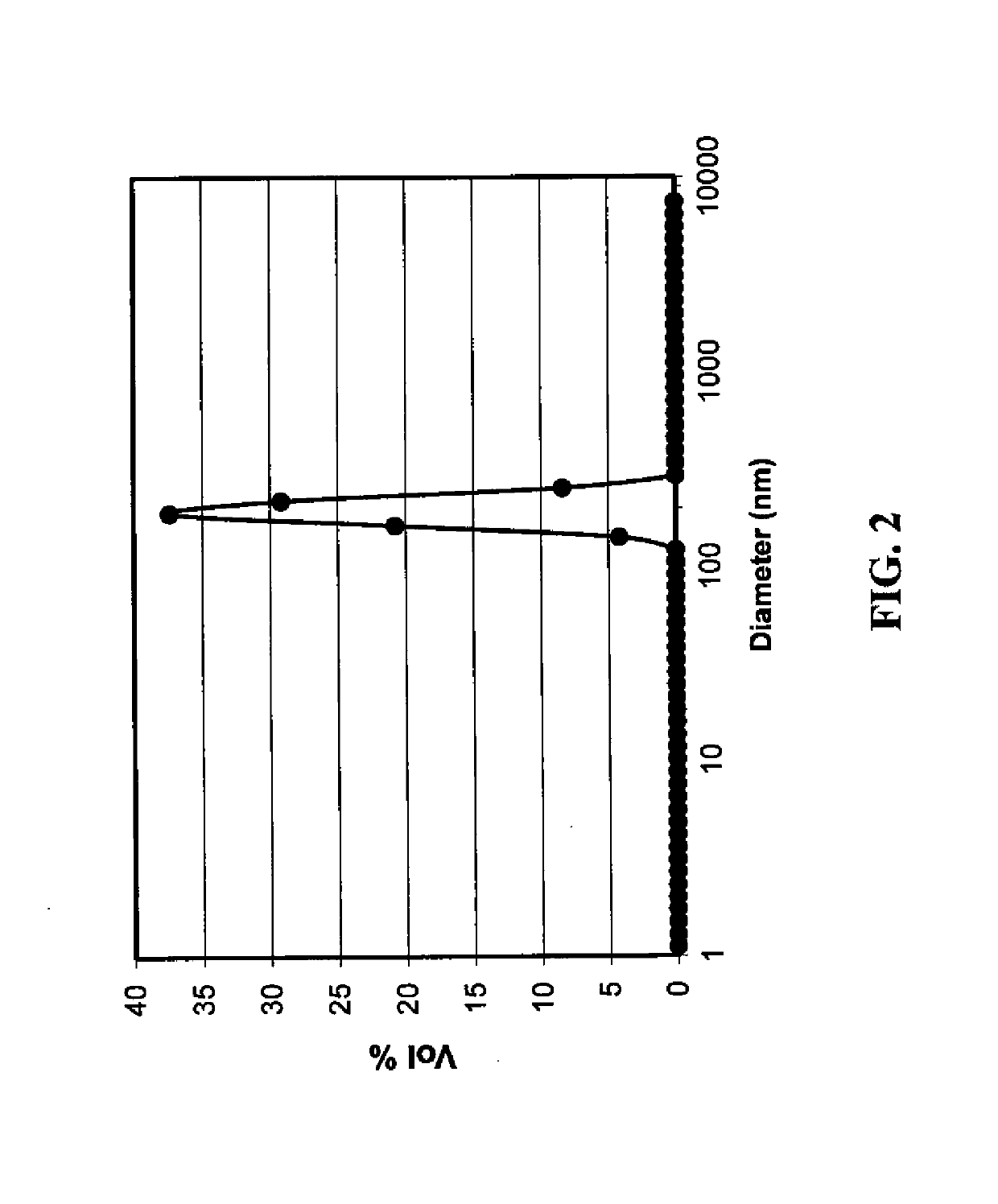Silver-containing non-aqueous composition containing cellulosic polymers
a cellulosic polymer and precursor composition technology, applied in the direction of electroless coatings, paints, electrically conductive surfaces, etc., can solve the problems of incompatible inks with many polymeric and paper substrates, time-consuming and expensive microfabrication of electrically conductive tracks (grids, wires, patterns), and inability to manufacture inks, etc., to achieve easy and safe operation, simple and safe, and high weight fraction
- Summary
- Abstract
- Description
- Claims
- Application Information
AI Technical Summary
Benefits of technology
Problems solved by technology
Method used
Image
Examples
invention example 1
Preparation of Non-aqueous Dispersion Containing Silver Nanoparticle-Cellulose Acetate Composite using 2-Butyl Aminoethanol as the Nitrogenous Base
[0201]In a 2-necked round bottomed flask a mixture of cellulose acetate (0.375 g; Aldrich, mol. wt. of 50,000, acetyl content of 39%) and 2-butyl aminoethanol (0.9 g) in 2-methoxyethanol (8 ml) was heated at 95° C. with stirring until all cellulose acetate was dissolved to form a premix solution. A solution of silver nitrate (5 g) dissolved in 2-methoxyethanol (15 ml) was slowly added to form a reaction mixture over a period of 20 minutes. During this addition, the reaction mixture became dark grey in color. It was stirred at 95° C. for another 30 minutes, cooled, and poured into methanol (500 ml). The resulting precipitate (silver nanoparticle-cellulose acetate composite) was filtered and washed with methanol to yield a gray solid (yield 98% based on theoretical silver).
[0202]Particle size distribution was measured using a dynamic light ...
invention example 2
Preparation of Non-aqueous Dispersion Containing Silver Nanoparticle-Cellulose Acetate Propionate Composite using 2-Methyl Aminoethanol as the Nitrogenous Base
[0205]In a 2-necked round bottomed flask. a mixture of cellulose acetate propionate (0.18 g; Eastman CAP 482-0.5, propionyl content 43%, Acetyl content 0.6%, mol. wt. of 25,000) and 2-methyl aminoethanol (1.5 g, mmol) in 2-methoxyethanol (7 ml) was heated at 95° C. with stirring until all cellulose acetate propionate was dissolved to form a premix solution. A solution of silver nitrate (5 g) dissolved in 2-methoxyethanol (15 ml) was added to the premix solution over a period of 35 minutes. The resulting reaction mixture was stirred at 95° C. for another 45 minutes, cooled, and poured into water (400 ml). The resulting precipitate was filtered and washed with methanol. A grey colored solid was obtained (yield of 97% based on silver). Particle size distribution was measured using a dynamic light scattering method (Malvern Instru...
invention example 3
Preparation of Non-Aqueous Dispersion of Silver Nanoparticle-Cellulose Acetate Propionate Composite Using 1,8-Diazabicyclo[5.4.0]undec-7-ene as the Nitrogenous Base
[0207]In a 2-necked round bottomed flask, a mixture of cellulose acetate propionate (0.4 g; Eastman CAP 482-20, propionyl content 48%, Acetyl content 1.3%, Mol. wt. of 75,000) and 1,8-diazabicyclo[5.4.0]undec-7-ene (16 g, mmol) in 2-methoxyethanol (28 ml) was heated at 95° C. with stirring until all cellulose acetate propionate was dissolved to form a premix solution. A solution of silver nitrate (8.8 g) dissolved in 2-methoxyethanol (100 ml) was added to the premix solution over a period of 80 minutes. The resulting reaction mixture was stirred at 95° C. for another 20 minutes, cooled, and poured into water (800 ml). The resulting precipitate was filtered and washed with methanol. A grey colored solid was obtained (yield of 98% based on silver). Particle size distribution was measured a dynamic light scattering method (M...
PUM
| Property | Measurement | Unit |
|---|---|---|
| boiling point | aaaaa | aaaaa |
| boiling point | aaaaa | aaaaa |
| height | aaaaa | aaaaa |
Abstract
Description
Claims
Application Information
 Login to View More
Login to View More - R&D
- Intellectual Property
- Life Sciences
- Materials
- Tech Scout
- Unparalleled Data Quality
- Higher Quality Content
- 60% Fewer Hallucinations
Browse by: Latest US Patents, China's latest patents, Technical Efficacy Thesaurus, Application Domain, Technology Topic, Popular Technical Reports.
© 2025 PatSnap. All rights reserved.Legal|Privacy policy|Modern Slavery Act Transparency Statement|Sitemap|About US| Contact US: help@patsnap.com



